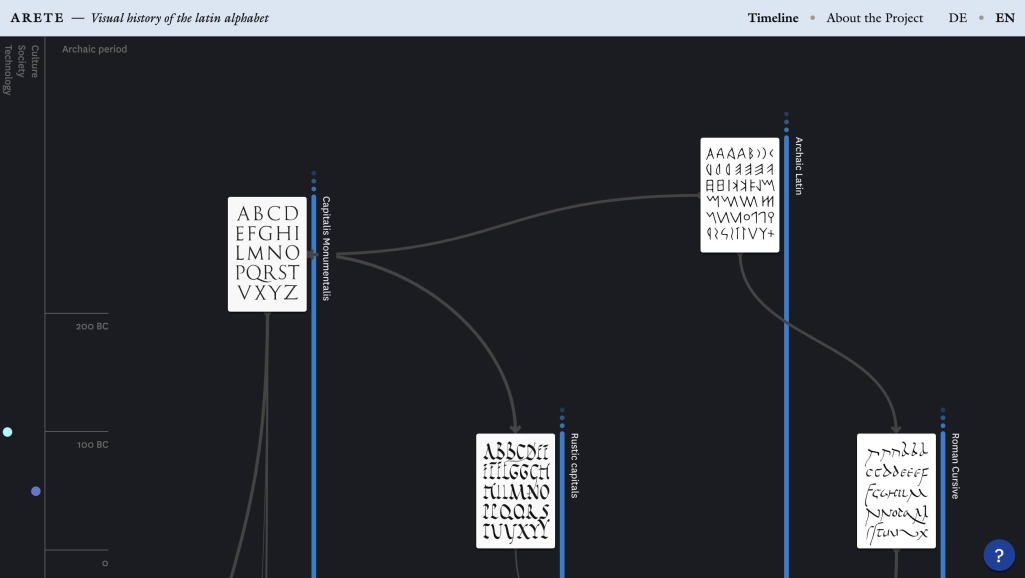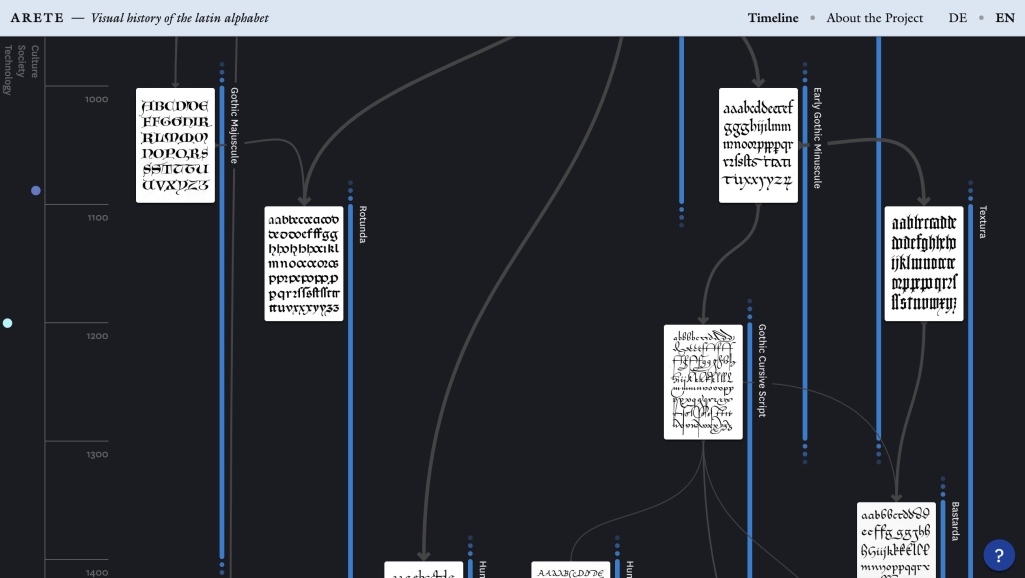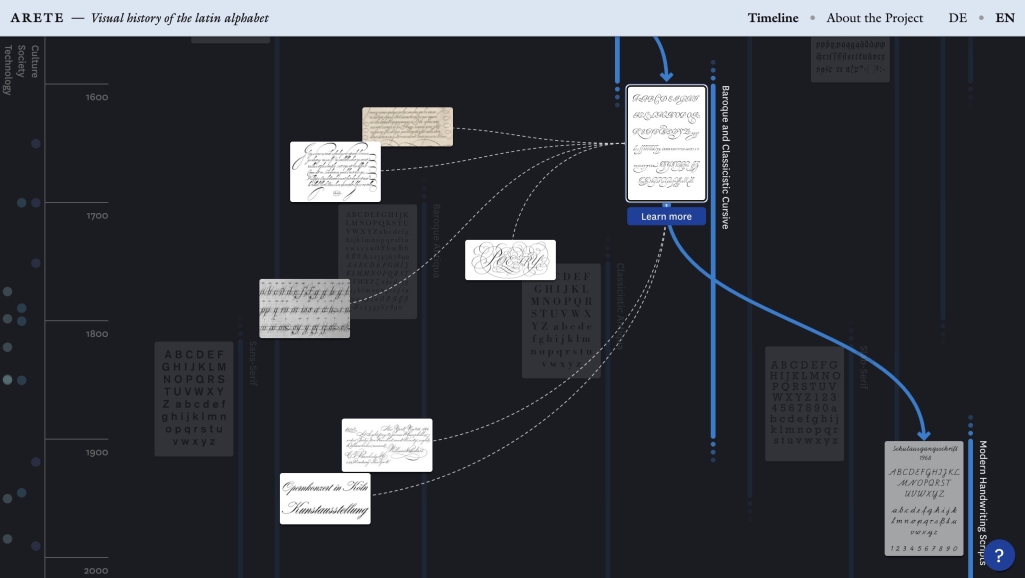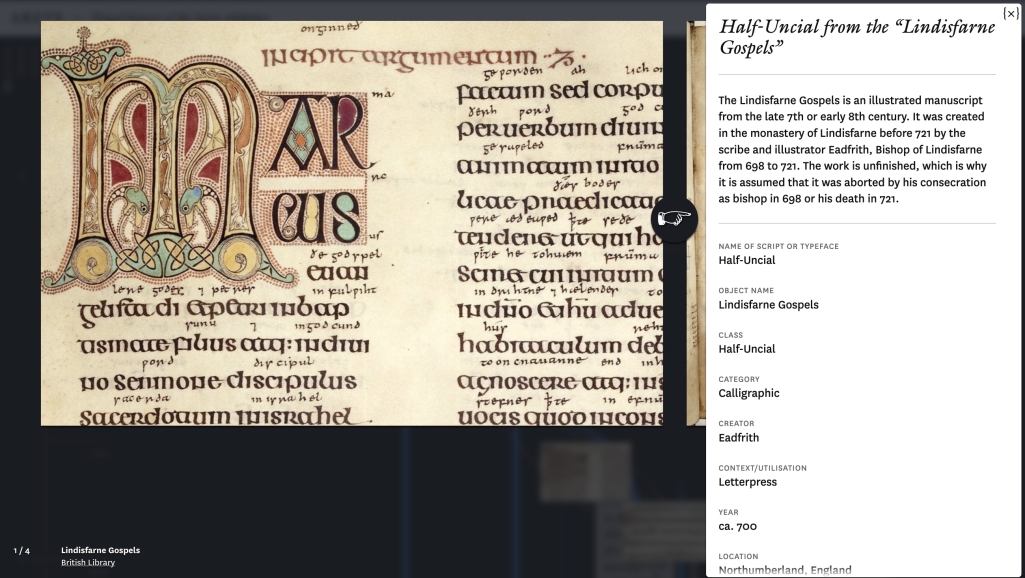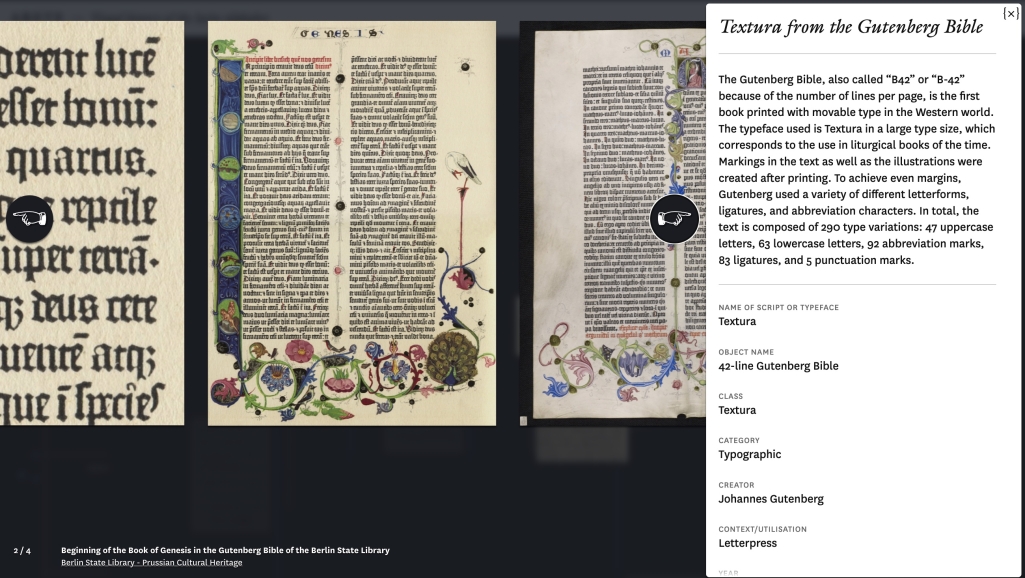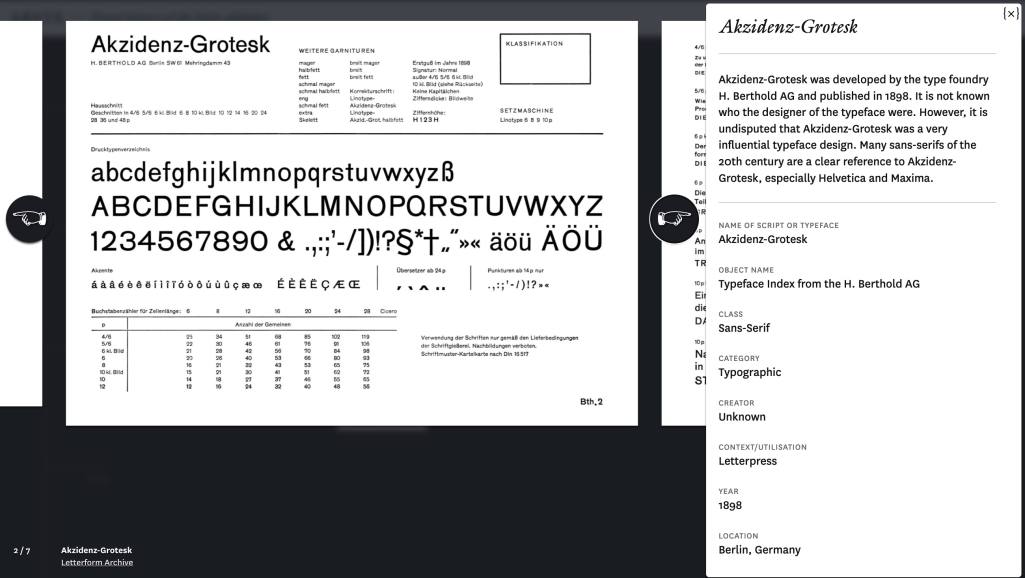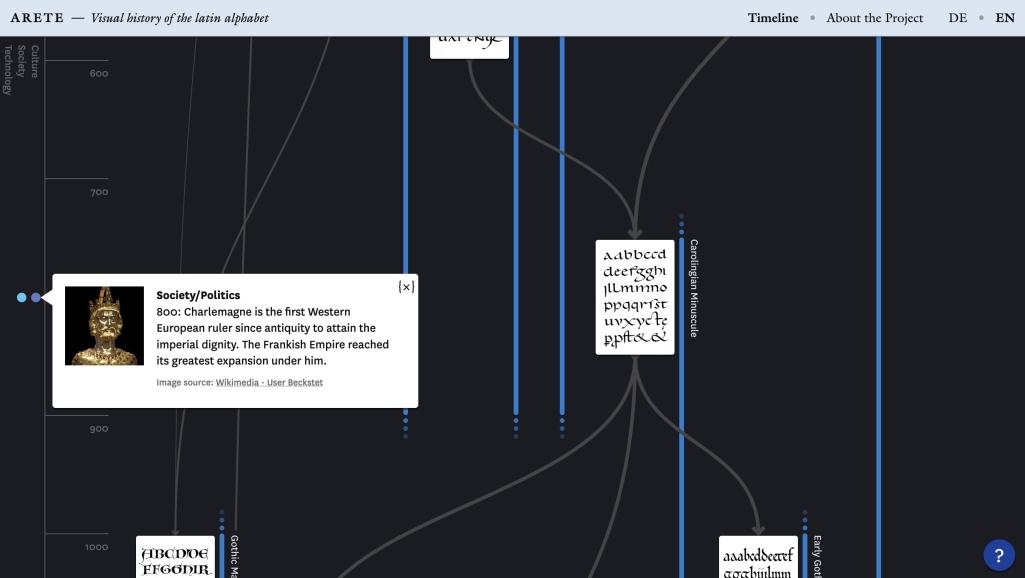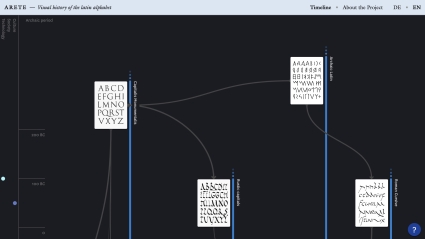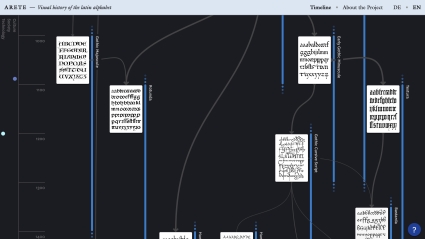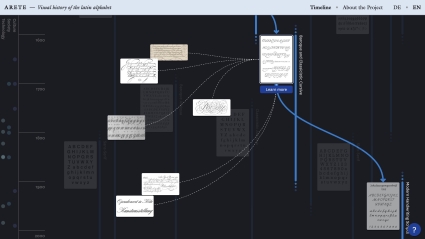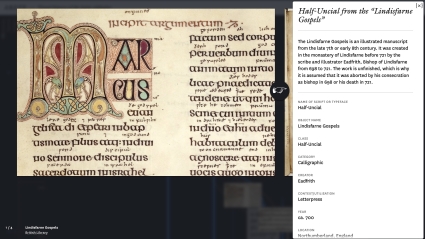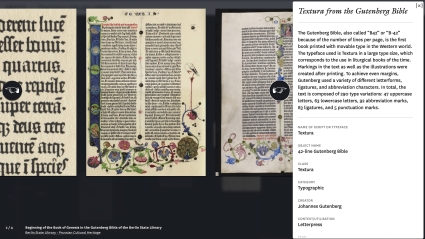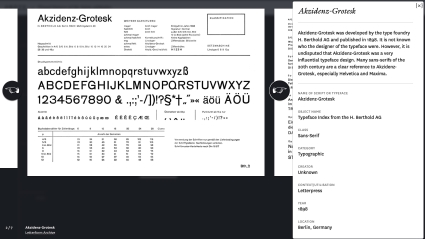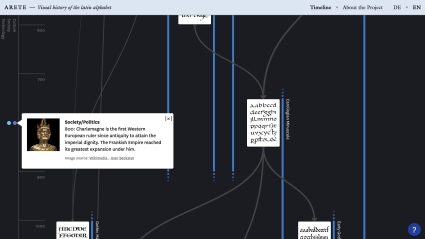ARETE A Visual History of the Latin Alphabet
The ARETE project is an interactive visualization of the history of the Latin alphabet. In particular, the visualization shows the temporal and formal relationships of the different scripts and typefaces to each other.
The aim of the ARETE project is to reveal the diversity and variance of the Latin alphabet in the last 2000 years. It is often suggested that the Roman Capitalis directly developed into Antiqua typefaces and then into modern Sans-Serifs. However, we believe this is only one possible view among many. Like any cultural development, the history of type and scripts is, at its core, a network. Over the centuries, designers have learned from others, referred to historic designs, and developed new variations of the letters. There were times of greater standardization and then again times of great variance. The ARETE project intents to show and clarify this diversity and these different design lines.
Furthermore, our concern was not only the typographic history, but also the history of calligraphy and handwriting. Even after the invention of printing, a lot of text production occurred by hand. In the 17th and 18th centuries, various social, economic and cultural developments even caused handwriting to flourish.
In order to be able to structure and convey the historical development, we have used classifications. These “classes” stand for certain, historically describable shapes of the Latin alphabet. The development of this class system is based on existing literature. In particular, the books “Die schöne Schrift” by František Muzika, “Schriftkunst” by Albert Kapr and “Bruckmann’s Handbuch der Schrift” by Erhardt D. Stiebner and Walter Leonhard were decisive for this.
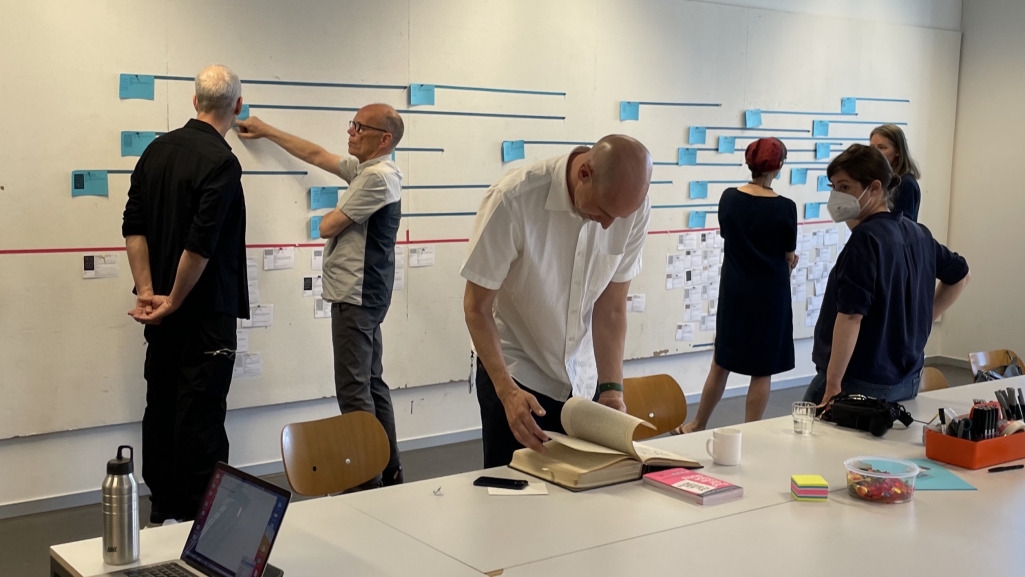
Additionally, we conducted an all-day workshop with calligraphy and typography experts. Sybille van Zuylen, Erik Spiekermann, Lucas de Groot and Stefanie Weigele participated. The aim of the workshop was to discuss our concept and our overall model of the network. The results of the workshop were the basis for the structure of the visualization.
In order to better understand the historic context of the different scripts and typefaces, a timeline with events from society, technology and culture is located on the left side of the visualization. These events offer orientation and provide a general historical framework.
The ARETE visualization offers a visual, non-linear and explorative approach to the history of the Latin alphabet.
The ARETE project was financed by the Innovation Fund of the University of Applied Sciences Potsdam.

